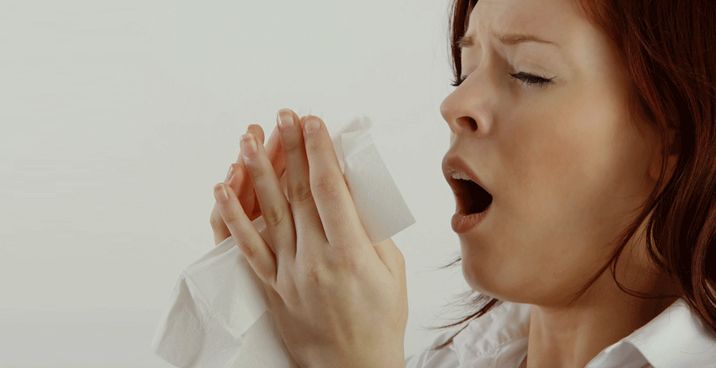
NASAL ALLERGY IS WHEN THE NOSE over-reacts or over-responds to certain stimuli, usually triggered by an allergen. Common allergens are dust mites, animal danger, pollen, mold and certain foods.
The nose has turbinates – fleshy swellings, filled with blood vessels, which act like filterson the lateral walls of the nasal passages. The entire surface of the turbinates is covered with glands that secrete mucous. Various stimuli and allergens change the flow of blood through these turbinates, causing them to swell or shrink in size, and to increase and decrease mucous production.
With these turbinates, the nose can humidify, warm and regulate the air flowing through the nasal passages. The nose also has nerve endings that can cause a reflex sneezing to expel unwanted substances or irritants.
However, when the nose is over-stimulated or allergic, it may lead to symptoms of allergic rhinitis, including:
- Blocked nose
- Runny nose
- Post-nasal drip
- Itchy nose
- Excessive sneezing
- Headache
- Clogged ears
- Puffiness and dark-circles around the eyes
- Puffiness of the nose
- Loss of sense of smell
In Singapore, our high humidity and warm climate favour the growth of mold and the dust mite population. We also have a wide range of pollen and grass allergens all year round, unlike countries with seasonal changes.
Risk
If left untreated, the allergies can cause persistent or fluctuating symptoms, depending on the level of allergens. If the nasal passages are blocked due to an allergy, this could lead to impaired ventilation and drainage of the sinuses (air cavities in the bones around the nasal passages), which in turn cause sinus infections.
Snoring, obstructive sleep apnea, bad breath and frequent throat infections could also arise. Any pre-existing asthma or chest infections may worsen, as air is not properly filtered by the nose before it enters the lungs.
Prevention
One way to thwart the effects of the allergens is to get rid of items that can house them, especially in the bedroom. Remove carpets, rugs, curtains, soft toys etc. Use dust-mite covers for pillows and bedding. Regularly clean airconditioning filters and adjust the temperature to suit your nasal symptoms. I personally find that setting the temperature at 25-26˚C is effective for my patients. At this temperature, you can get rid of blankets and comforters which store a lot of dust mites. If possible, avoid using air-conditioning altogether as sudden changes in temperature (moving in and out of airconditioned areas) may irritate sensitive noses. This would help reduce your carbon footprint in the long run too.
When one has full-blown nasal symptoms, one should get out of the environment with the allergens. It is advisable to get some fresh air and sunshine if one has an attack. Regular doses of exercise often help patients with allergic rhinitis by increasing the sympathetic tone (the nervous system that controls the nose).
Avoid physical irritation to the nose by refraining from hard blowing, snorting, rubbing and sticking tissue into the nose. These actions will aggravate and prolong the nasal symptoms. If the environment is bad or if you have a bad bout of allergy, try breathing through the mouth for a period of time. This will cut off the allergen supply to your nose and also allow your nose to regulate itself.
You may also turn to medication to treat nasal allergies. There are intra-nasal steroids, antihistamines and nasal decongestants. I personally find that the newer-generation intra-nasal steroids are very effective for most patients if used correctly. They are also designed to be minimally absorbed into the body. It is very important to teach the patients how to use it and to adjust to the minimal dosage required, tailored to the individual’s requirements.
As there are many other diseases and conditions that may mimic nasal rhinitis, it may be a good idea to visit an ear, nose and throat specialist for a full ENT examination with a nasal endoscope (to exclude other pathologies), before commencing treatment.
A detailed personal history and family history would often guide us to the most likely allergens. Allergy tests may also be considered, although these tests do sometimes give unreliable results. Usually, I will only do allergy tests if a patient fails to respond to the above therapy. In the majority of straightforward cases, CT-scan sinus and x-rays should be avoided, especially in children, because of the exposure to radiation.
Our Singapore ENT clinic specialises in the end-to-end management of all ear, nose, and throat conditions while keeping the best ENT practices in mind.







